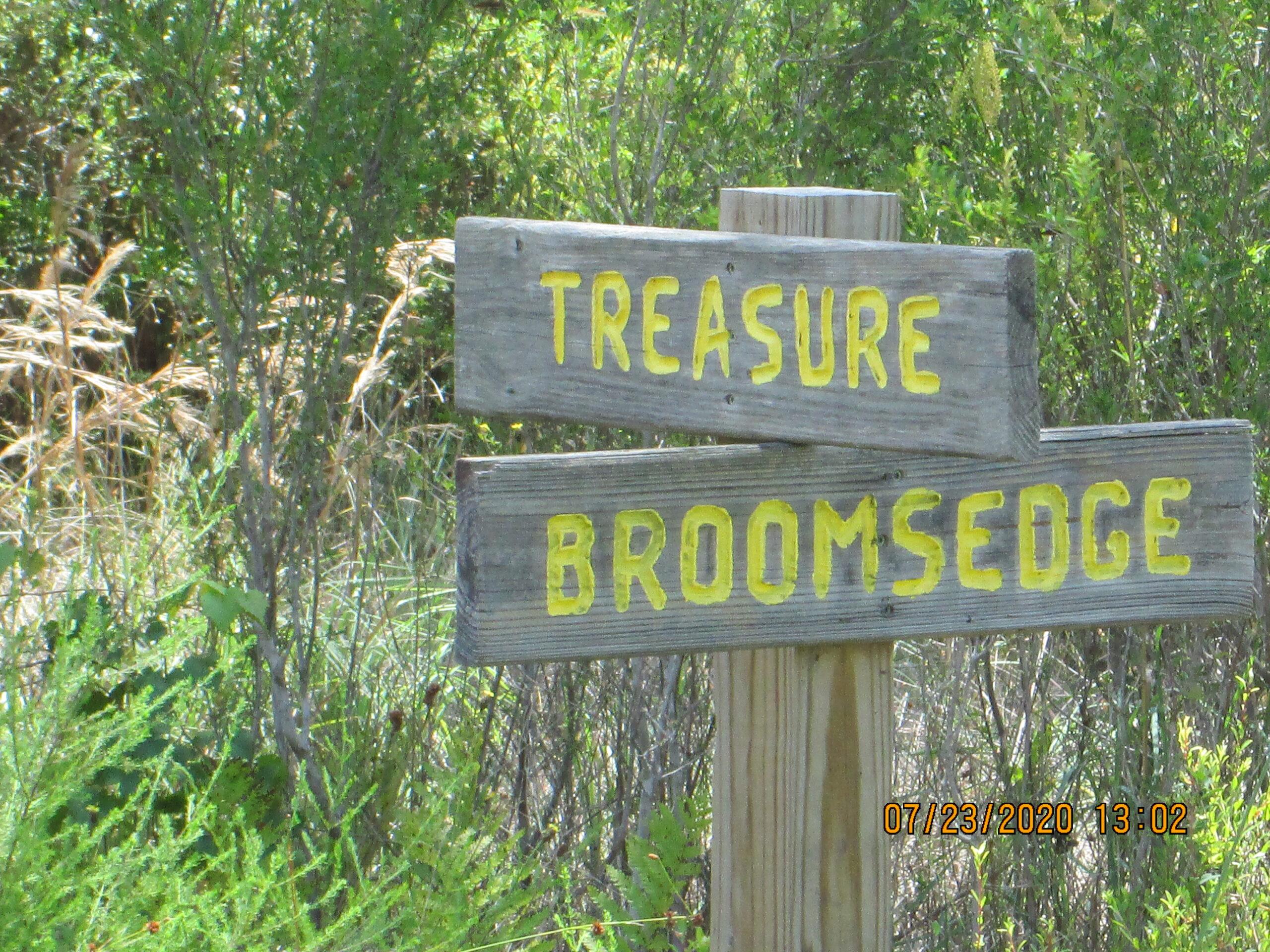See nature at its wildest on Broomsedge Road
This article is the fourth in a series exploring the many trails within the St. Joseph Bay State Buffer Preserve.
Trails in the St. Joseph Bay Buffer Preserve vary in length. They also differ greatly in soils, trees, and ease of traveling. Broomsedge — that’s broom-sedge, not brooms-edge — road is only 0.74 miles long when you leave Treasure Road until you intersect with Sandridge Road.
And for those looking for a relaxing hike, this one is just a nice walk in the Preserve.
Take this intersection to see nature at its finest!
Now, do you know your Andropagon Virginicus? You guessed it; a common name is Broomsedge.
It’s found in the eastern portion of the United States, growing in open areas. Broomsedge grows in many different types of soils. However, it favors sandy, loose, moist sites. Broomsedge thrives in those conditions considered poor quality for the most desirable grass species. It is a shallow rooted plant, and no matter where it is found growing, it indicates there is poor soil.
As you travel on Broomsedge Road, your first impression is one of beauty depending on the time of the year you are observing. Broomsedge leaves are medium green and stand at attention from its clump. In fall and winter its foliage turns a lovely golden orange. A field of Broomsedge is quite spectacular on a late winter afternoon, as it turns partly glowing coppery foliage towards the sun and has silvery hairs that reflect the sunlight.
The Zebulon Skipper Butterfly uses Broomsedge as a larval host. Broomsedge is used as an ornamental plant in yards, golf courses and the like because its water requirement is low.
Wildlife on the Preserve love the Broomsedge, especially in winter, when other food sources are limited or non-existent. Ground nesting birds, such as turkey or quail, use Broomsedge as ground cover.
Oddly enough, Broomsedge is not a sedge at all. It’s really a grass, in the same genus as bluestem.
Its name comes from the fact that it made a passable broom for the pioneer homesteaders. They would gather several handfuls harvested after the first frost, then tie tightly around a stout stick, trim to the length desired, and have a broom that was serviceable for their needs.
Another oddity is that we could not get a good picture of it on Broomsedge Road. Sandridge, next to Broomsedge had some growing, so what you see in pictures is on Sandridge.
Broomsedge bluestem is a native grass making it a hardy grass which will do well in drought conditions. It becomes a very persistent grass after establishing itself. Being a native grass makes it very hardy in relation to environmental matters.
As a benefit to the environment and used as an ornamental grass, Broomsedge is an attractive grass growing in clumps. In landscape uses, Broomsedge is a useful grass for erosion control, rain gardens and stormwater management.
Research tells us Native Americans brewed a tea from the roots of Broomsedge. They drank this each day for backaches. They washed wounds, sores, and rashes with it.
While it is a native grass for the eastern US, in California, Hawaii, Japan and Australia Broomsedge is an introduced invasive species. It got the name “Whiskey Grass” in Australia because it was used as a packing material for American whiskey, was dispensed in the environment and it established itself.
Interesting fact: This grass is allelopathic, which means it excretes chemicals that prohibits growth in shrubs and plants around it. Therefore, it can take root and maintain itself in large populations.
Buffer Preserve Manager Dylan Shoemaker encourages everyone to come out and try the different trails all year.
“You will improve your health by walking, hiking or biking and you will develop a sense of importance in preserving the natural environment,” he said. “We are seeing more new faces in the Preserve and we love it!”
Trails are open from sun-up to sundown. There is one gate on SR30-A (Main Gate) and 2 gates on CR 30-A (South Gate and Island Gate). The Troy Deal Tract is located on SR 30-E. Trail maps at each site will guide you. Each site has a small parking area also.
Friends of the St. Joseph Bay Preserves Board President, Richard Trahan, invites everyone who is interested in belonging to a group of like-minded people, who are most interested in the health of our environment, are committed to saving our piece of paradise, and preserving the biological hotspot that we live in, to join the Friends.
This article is the sixth in a series exploring the many trails within the St. Joseph Bay State Buffer Preserve. To read the other pieces in the series, visit The Star’s website at gulfcounty.news.


Meet the Editor
David Adlerstein, The Apalachicola Times’ digital editor, started with the news outlet in January 2002 as a reporter.
Prior to then, David Adlerstein began as a newspaperman with a small Boston weekly, after graduating magna cum laude from Brandeis University in Waltham, Massachusetts. He later edited the weekly Bellville Times, and as business reporter for the daily Marion Star, both not far from his hometown of Columbus, Ohio.
In 1995, he moved to South Florida, and worked as a business reporter and editor of Medical Business newspaper. In Jan. 2002, he began with the Apalachicola Times, first as reporter and later as editor, and in Oct. 2020, also began editing the Port St. Joe Star.